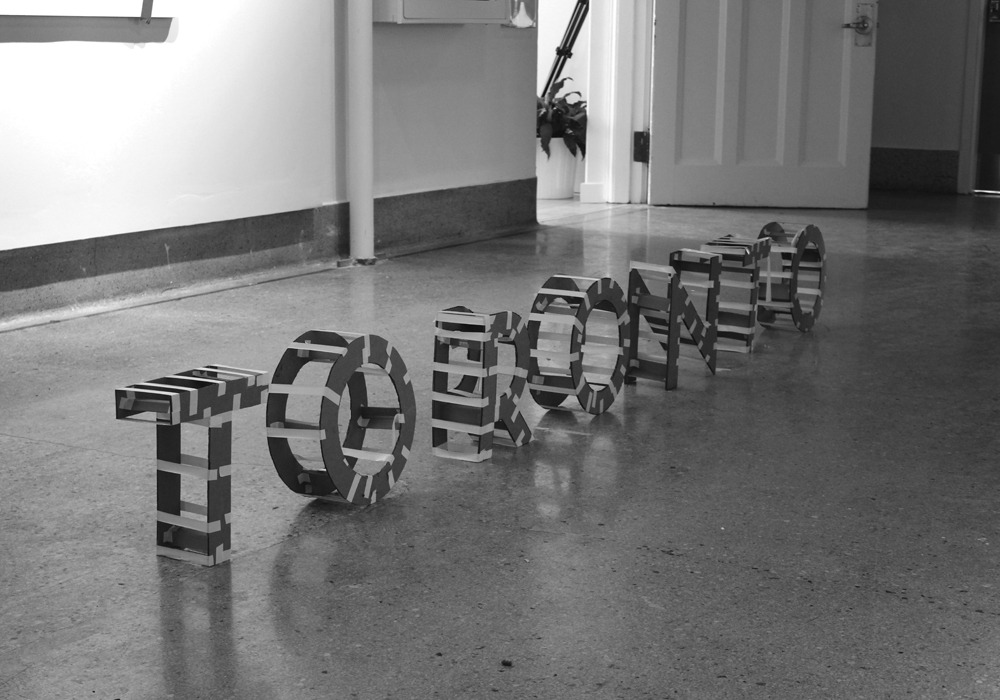Bernice Afriyie, Staff Writer
Featured image courtesy of Trevor Campbell
Trevor Campbell is the visionary behind art exhibit, Visible Cities, which ran from February 20 to March 5 at Artscape Youngplace. Campbell is a queer writer, performer, and designer from the masters of design program at York. As a designer, he has worked with Soulpepper Theatre Company, Scotiabank Nuit Blanche, and Canadian Stage to name a few. Visible Cities focused on five urban cities, Toronto being one of them, and was created to find accessible and responsive strategies for reclaiming urban localities through public design. Here’s what Campbell had to say about urban planning, liminal public spaces, and the need to challenge the frameworks of categorizing representations of our cities.
Excalibur: What is it about urban settings that results in such a conflict between personal identity and communal identity in public spaces?
Campbell: I think this conflict is actually an opportunity. Conflicts of identity in urban spaces, especially in sites of public commons, mean that opposing viewpoints of an opportunity can coexist. The cultural diversity of a city like Toronto is a source of conflict, but also an asset to the city. The threat to all of this is trying to reach absolute consensus, which is usually done to make the city a more manageable product. City branding uses corporate models that really try to create a focused message of the city to sell it to markets like the tourism industry. This is a lot easier if you can say, “Our city is ‘X’. If you recognize the conflicts of urban locality, you might have to say, “Our city is X, sometimes Y, occasionally Z, and recently a little A.” From a branding and sales perspective, a complicated message is undesirable. This consensus extends not only to the stories we tell about the cities, but the way we visualize them. If you look at the Toronto sign developed for the Pan Am and Parapan Am Games, it’s a work that is trying to unify.
E: How does your exhibition attempt to reconcile this?
TC: Visible Cities is first and foremost a site of discourse. It’s a public space that is designed to encourage questions, dialogue, and conflict. I’ve tried to facilitate that by asking a lot of questions on site. Whereas we are accustomed to a lot of authoritative text in an exhibition space defining an experience for us, I tried to avoid that and get visitors to frame it themselves. There are lots of customizable elements as well. The Toronto case study I examined reimagines the Toronto sign in smaller, lighter, and cheaper iterations (made out of plaster, cardboard, and paper, respectively) that can become canvases for public thought. Finally, the exhibition hosted a speaker series to give more opportunities for conversation.
E: How can urban cities move towards being architecturally and visually representative of the many identities of its inhabitants?
TC: It would be a lot easier with support from administrations, but it’s unusual. One of the problems is that we’ve been heavily conditioned to recognize any public art that isn’t “official” as graffiti. But, the “official” visual representations of our city need to be supplemented by many other sources and as citizens continue to lose access to public space, this becomes harder and harder. Toronto is developing so quickly and a lot of our public space is becoming privatized or otherwise deemed “off limits.” But what if we thought about the city as a canvas? Right now, all we’re being offered is the chance to tell the person with the paintbrush what we want to see and hope they listen. Why isn’t getting to hold the paintbrush a right of citizenship? I’m speaking metaphorically, but I think a good place to start is in recognizing locals as experts of their localities and allowing them local agency. Citizens should be encouraged and given the freedom to think visually on a local level.
E: How much responsibility do urban spaces have in representing its people?
TC: It would be nice if things could work in the reverse with cities being created to support citizenship. Henri Lefebvre uses the metaphor of a creature that secretes its own shell based on the shape of the organism as opposed to its shell acting as a cage. Ideally, cities would not need to represent us because we would have proper platforms to represent ourselves. Cities are the products of our social systems, so it’s deceitful to act like we can’t or shouldn’t have agency over them.
Follow us on instagram, @excalphotos


